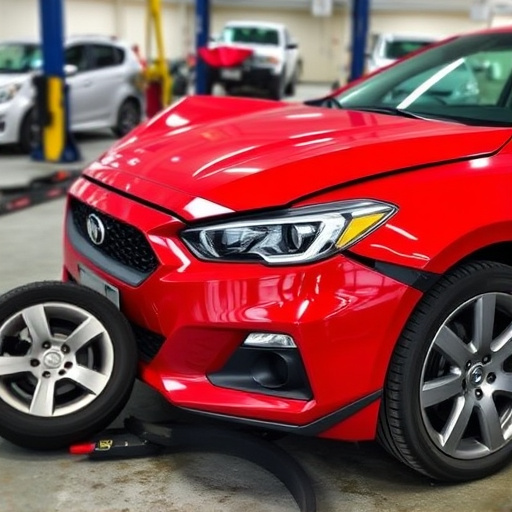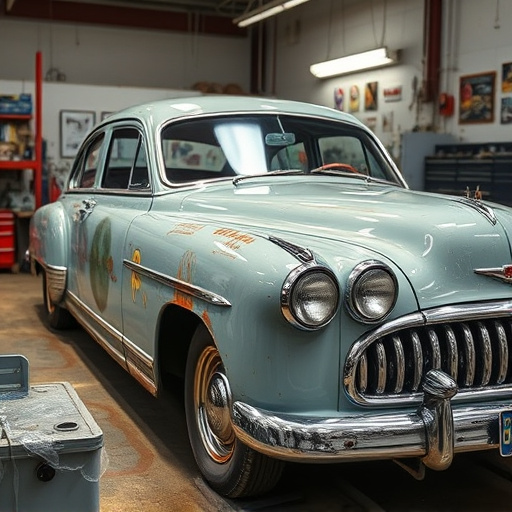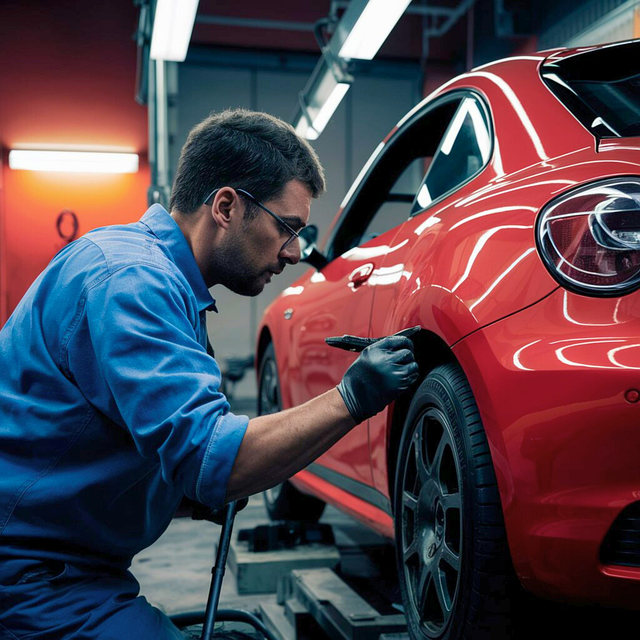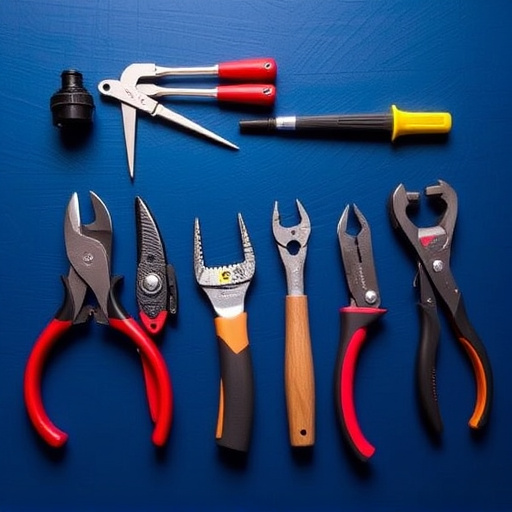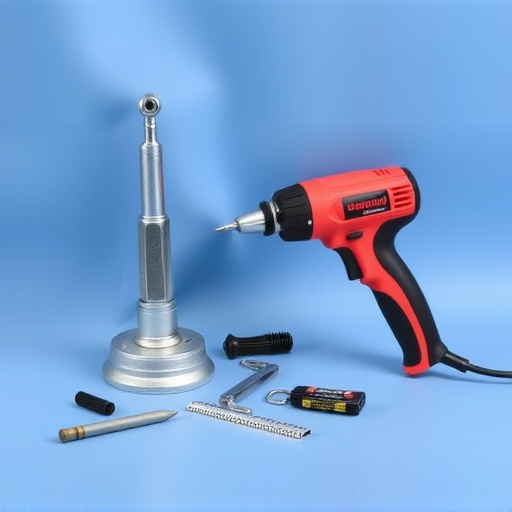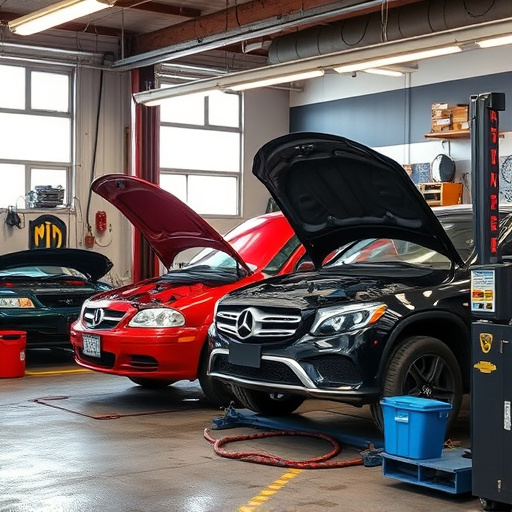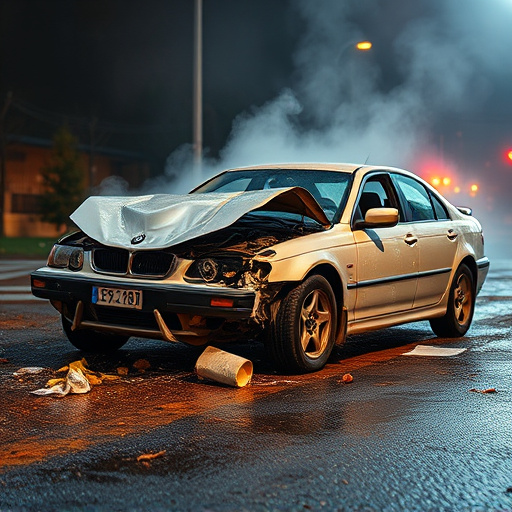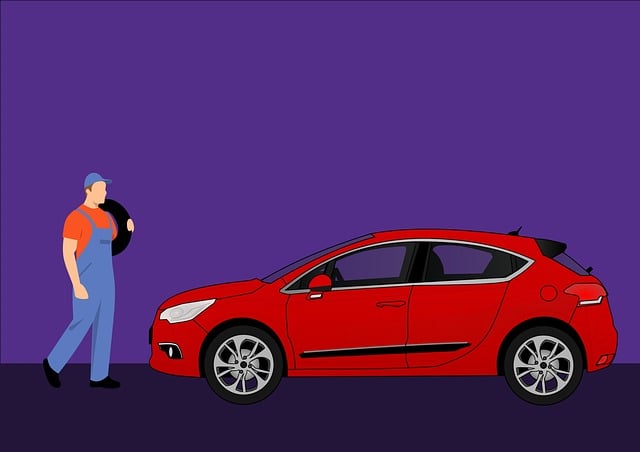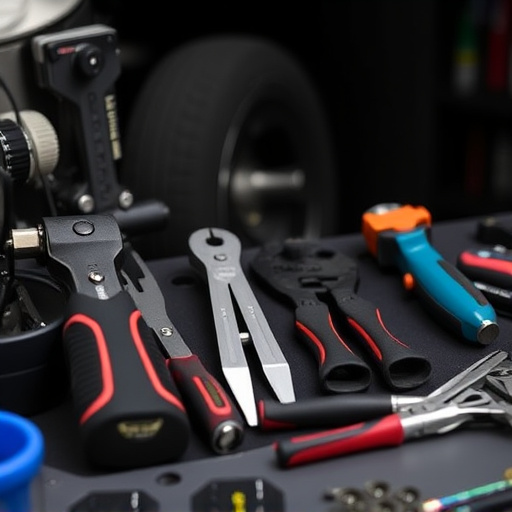Training Programs for Hail Damage Repair Specialists are crucial in equipping professionals with the skills needed to handle complex repairs efficiently. Offered by industry associations and accredited institutions, these programs cover metalworking, plastic welding, and the latest autobody repair technologies. Participants gain hands-on experience using advanced tools and techniques to fix dented panels, cracked windshields, and other vehicle damages caused by hailstorms. The training emphasizes both technical skills and safety protocols for working in hazardous conditions, preparing specialists for real-world challenges through virtual simulations and case studies. Professionals can acquire these skills through specialized trade schools and vocational programs, which offer comprehensive training in hail damage assessment and restoration, making graduates valuable to insurance companies or car repair shops specializing in storm-related damage. Training durations range from several weeks to months, culminating in certification exams.
Hail damage repair specialists are crucial in safeguarding properties from the often devastating effects of severe weather events. Their expertise is trained through specialized programs that equip them with the knowledge and skills needed to assess, mitigate, and restore hail-damaged structures. This article delves into the comprehensive training and certification process these professionals undergo, highlighting key institutions, course durations, industry standards, and continuous education opportunities in the field of hail damage repair.
- Training Programs for Hail Damage Repair Specialists
- – Overview of common training institutions and courses
- – Duration and curriculum highlights
Training Programs for Hail Damage Repair Specialists

Training Programs for Hail Damage Repair Specialists play a pivotal role in ensuring professionals are equipped to handle complex repairs efficiently. These programs, often offered by industry associations and accredited institutions, cover a comprehensive range of topics specific to hail damage assessment and restoration. Participants gain hands-on experience using advanced tools and techniques to fix dented panels, cracked windshields, and other vehicle damages caused by hailstorms.
The training emphasizes both technical skills and safety protocols, crucial for working in hazardous conditions. Courses typically include modules on metalworking, plastic welding, and the latest technologies in autobody repairs. Many programs also integrate virtual simulations and case studies to prepare specialists for real-world challenges encountered in car body shops. This comprehensive approach ensures that hail damage repair specialists are not just technically proficient but also adept at navigating the unique demands of this specialized field.
– Overview of common training institutions and courses
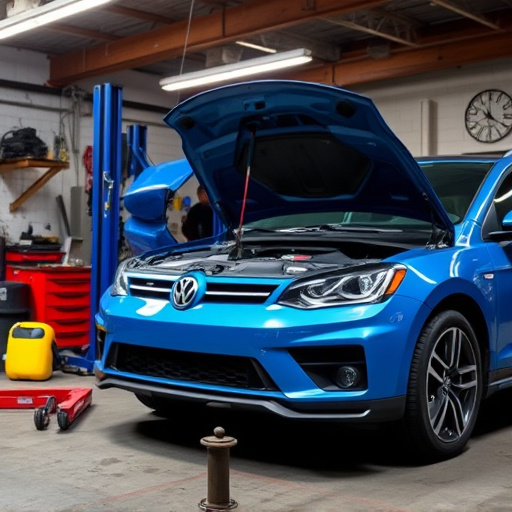
Many hail damage repair specialists undergo their training through reputable trade schools and vocational programs that specialize in auto body repair. These institutions offer comprehensive courses covering various aspects of automotive repair services, with a specific focus on storm-related damage, including hail. Students learn techniques to assess and fix dents, cracks, and other common types of hail damage seen in cars and trucks.
The training often includes hands-on experience using specialized tools and equipment found in professional auto body shops. Some courses may also delve into the latest technologies and methods for restoring vehicles to their pre-damaged condition, ensuring not just visual but structural integrity as well. This expertise is invaluable, especially for those looking to work directly with insurance companies or car repair shops specializing in hail damage restoration.
– Duration and curriculum highlights
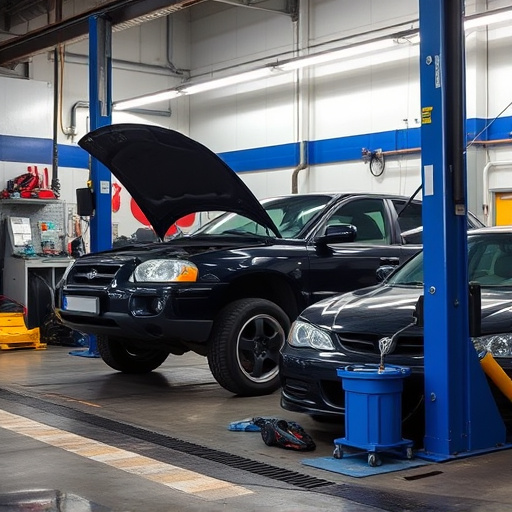
The training duration for hail damage repair specialists varies depending on their specific role and the level of certification sought. Typically, a comprehensive program can take anywhere from several weeks to several months to complete. During this time, trainees are immersed in an intense curriculum designed to equip them with the skills necessary to handle various aspects of hail damage repairs, including auto glass replacement, bumper repair, and car collision repair.
The curriculum often includes theoretical lessons on the science behind different types of hail and their impact on vehicles. Practical sessions involve hands-on experience with specialized tools and equipment used for assessing and repairing various forms of hail damage. Trainees also learn about safety protocols, as working with damaged vehicles requires meticulous care to prevent further harm or accidents. The program may culminate in a certification exam that tests their knowledge and proficiency in hail damage repair techniques.
Hail damage repair specialists undergo specialized training and certification programs to ensure they possess the necessary skills and knowledge to effectively assess and restore properties affected by severe weather events. These courses, often offered through reputable institutions, cover a range of topics from identifying different types of hail damage to employing advanced restoration techniques. With the increasing frequency and intensity of storms, professionals in this field play a vital role in helping communities recover quickly and efficiently. By investing in their training, hail damage repair specialists not only enhance their capabilities but also contribute to the overall resilience of affected areas.
